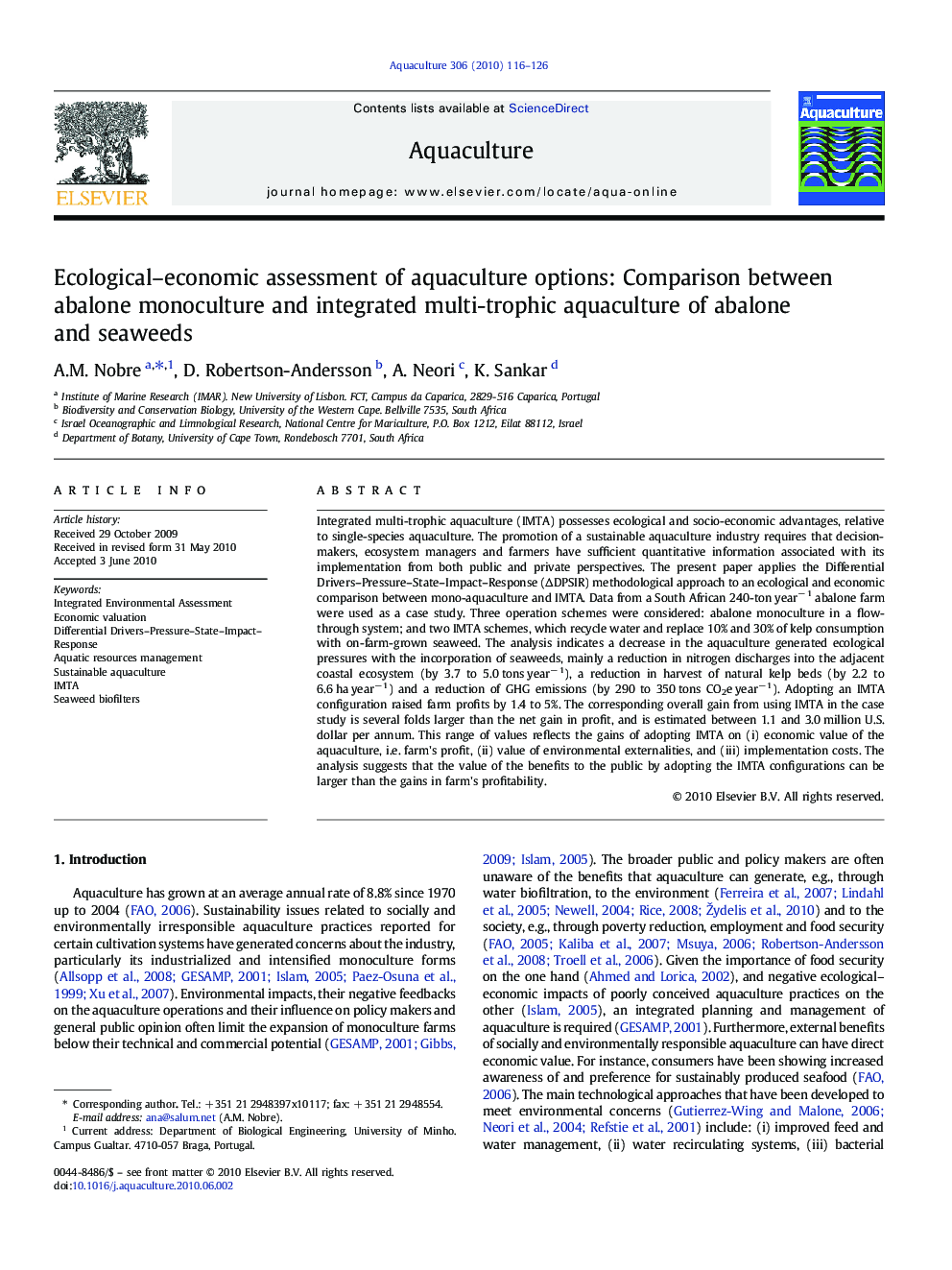| Article ID | Journal | Published Year | Pages | File Type |
|---|---|---|---|---|
| 2423590 | Aquaculture | 2010 | 11 Pages |
Integrated multi-trophic aquaculture (IMTA) possesses ecological and socio-economic advantages, relative to single-species aquaculture. The promotion of a sustainable aquaculture industry requires that decision-makers, ecosystem managers and farmers have sufficient quantitative information associated with its implementation from both public and private perspectives. The present paper applies the Differential Drivers–Pressure–State–Impact–Response (ΔDPSIR) methodological approach to an ecological and economic comparison between mono-aquaculture and IMTA. Data from a South African 240-ton year− 1 abalone farm were used as a case study. Three operation schemes were considered: abalone monoculture in a flow-through system; and two IMTA schemes, which recycle water and replace 10% and 30% of kelp consumption with on-farm-grown seaweed. The analysis indicates a decrease in the aquaculture generated ecological pressures with the incorporation of seaweeds, mainly a reduction in nitrogen discharges into the adjacent coastal ecosystem (by 3.7 to 5.0 tons year− 1), a reduction in harvest of natural kelp beds (by 2.2 to 6.6 ha year− 1) and a reduction of GHG emissions (by 290 to 350 tons CO2e year− 1). Adopting an IMTA configuration raised farm profits by 1.4 to 5%. The corresponding overall gain from using IMTA in the case study is several folds larger than the net gain in profit, and is estimated between 1.1 and 3.0 million U.S. dollar per annum. This range of values reflects the gains of adopting IMTA on (i) economic value of the aquaculture, i.e. farm's profit, (ii) value of environmental externalities, and (iii) implementation costs. The analysis suggests that the value of the benefits to the public by adopting the IMTA configurations can be larger than the gains in farm's profitability.
